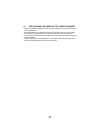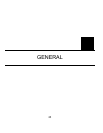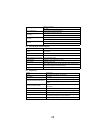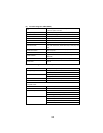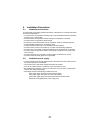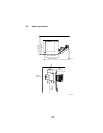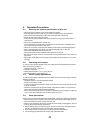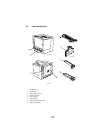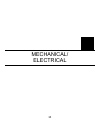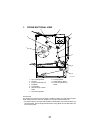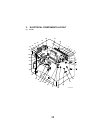31
2. Installation Precautions
2-1. Installation environment
To ensure safety and prevent possible malfunctions, install the unit in a location that meets
the following requirements.
• A location that is not exposed to extremely high or low temperatures and not exposed to
extremely high or low humidity.
• A location that is not exposed to extreme changes in temperature or humidity.
• A location that is not exposed to direct sunlight.
• A location out of the direct airflow of an air conditioner, heater or ventilation opening.
• A well-ventilated location that is not extremely dusty.
• A stable and level location that is not subjected to undue vibrations.
• A location that is not near room heaters or any other heat-generating appliances.
• A location away from volatile, combustible material (such as paint thinner or gasoline).
• A location that is not exposed to water or other liquids and where a short circuit of the
unit is not likely.
• A location that does not put people in the direct airflow of exhaust from the unit.
• A location where ammonia gases are not generated.
2-2. Installation power supply
• If other electrical equipment are plugged into the same electrical outlet, make sure that
the current capacity is not exceeded.
• Use a power source with as little voltage fluctuations as possible.
• Only use an outlet expander or a table tap; never use extension cords.
• Be careful that the unit does not pinch or is not placed on top of power or transmission
cords of other electrical equipment.
• Periodically check that the following conditions are met:
✽The power supply plug does not feel unusually warm.
✽The power supply cord is free of cracks and scratches.
✽The power supply plug is securely inserted into the electrical outlet.
✽Pressure is not applied to the power supply cord.



